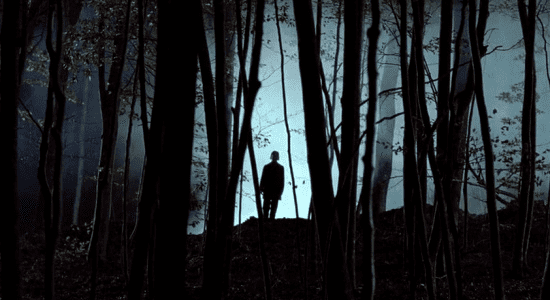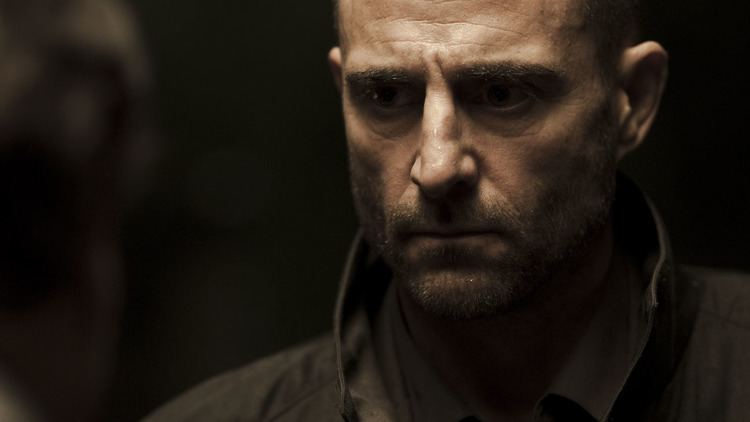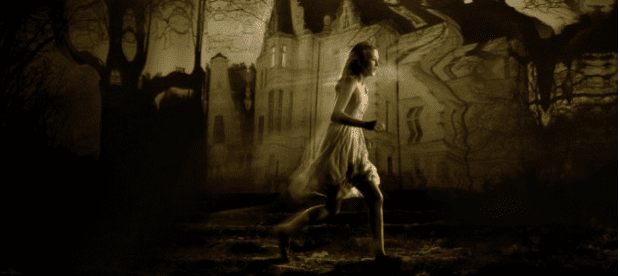Mindscape
8 /10 1 Votes
| ||||||||||||||||||||||||||||||||||
 | ||||||||||||||||||||||||||||||||||
Mindscape official international trailer 1 2013 mark strong movie hd
Mindscape, Inc. was an international software publishing company, previously part of The Learning Company and later affiliated with Electronic Arts. As of 2004, the group had offices in Europe, Asia, Australia and South America. It had an annual turnover of €38 million and employed 150 people. Mindscape published and distributed educational and lifestyle games and software. Its most notable titles include Law & Order: Criminal Intent and Lego Island.
Contents
- Mindscape official international trailer 1 2013 mark strong movie hd
- History
- Acquisition by Toolworks
- Subsequent history
- History of Toolworks
- Software published
- References

History

Mindscape began in 1983 as a software publisher in Northbrook, Illinois. Founded by English-born Roger M. Buoy, the company established its early roots developing educational software for the TI-99/4A and the Apple II. It later branched out into entertainment software by becoming a Lucasfilm licensee, publishing the Indiana Jones computer games before they were taken in-house by Lucasfilm Games with Indiana Jones and the Last Crusade. It also released text adventures tied to famous authors and a controversial game from Tom Snyder Productions called Sub Mission. The latter required gamers to purchase a replacement disk if they lost the mission three times.

Under creative director Sandy Schneider, the company became one of the earliest publishers of software for the Macintosh, publishing the seminal Chris Crawford game Balance of Power. It also received accolades for its publishing of the innovative Apple Macintosh adventure games, the MacVentures, which were developed by ICOM Simulations, and included Déjà Vu, Uninvited, and Shadowgate. It also published several of the early Macromind products, namely Graphic Works and Comic Works.

In 1984 Mindscape worked closely with Commodore in developing some of the initial applications for the Commodore Amiga. The company participated in the 1985 release of the Amiga that featured Andy Warhol and Debbie Harry.
In 1988, Mindscape became a Nintendo licensee and published video games such as The Terminator for the Nintendo Entertainment System (NES) and Paperboy for both Nintendo's NES and Game Boy platforms. Paperboy becoming a huge hit worldwide selling over 2 million copies on the NES alone.

During the late 1980s, Mindscape was unique in the software entertainment arena by establishing a global network. Buoy opened offices around the world and installed seasoned managers to run them. By 1990, Mindscape had offices in Sydney, Australia; Chiba, Japan; Sussex, England; and Normandy, France.

In 1988 Mindscape became a public company raising $9.6 million. It was one of the first companies to have a successful IPO after the stock market crash of October 19, 1987.
Mindscape was famous for its Rock 'n Roll parties at Chicago's Summer Consumer Electronics Show (the trade show prior to E3) where it released its new products and entertained its customers.
Acquisition by Toolworks

In 1990 Les Crane's The Software Toolworks acquired Mindscape, primarily for the Nintendo license. Mindscape’s US operations were absorbed into Toolworks, retaining only a handful of Mindscape employees. Mindscape continued to operate in the UK and Australia as a product line of Toolworks.
The company held one last Summer Consumer Electronics Show parties where Dudley Moore introduced the Miracle Piano Teaching System, an electronic learning system for the piano. However, The Software Toolworks almost sank after it over-ordered the piano hardware for Miracle Piano Teaching System, was not able to sell through copies of the product very quickly, and was stuck with a large inventory. Roger Buoy left the company in 1992 to pursue other entrepreneurial activities.
Subsequent history
The company became involved in another round of mergers and headquarters moved to Novato, California, in Marin County north of San Francisco. It started out publishing software for Heath/Zenith personal computers. Early products for The Software Toolworks included Mychess and the C/80 C compiler for CP/M. The two most popular products were the very long-lived series Mavis Beacon Teaches Typing and the Chessmaster series of computer games. It is also known for its contribution in the development of the Lego Island PC game series.
In 1992, Mindscape created and released the isometric fantasy role-playing game Legend (known as The Four Crystals of Trazere in the United States) for MS-DOS, Amiga and Atari ST. Following some success worldwide, a sequel Worlds of Legend: Son of the Empire was released for MS-DOS and Amiga in 1993.
In 1993, The Software Toolworks developed Wing Commander for the Super Nintendo Entertainment System under the Mindscape brand in conjunction with Origin Systems at a time when The Software Toolworks was downsizing and struggling to survive. Sales from the game heavily exceeded expectations and the resulting revenue brought the company back from the brink (as evidenced by its share price which had fallen to $2 per share and was ultimately brought back up to $12 a share before the company was purchased).
In 1997, the internal development department was shut down. Through an undisclosed deal with Electronic Arts UK, most of the development staff, and the game they were developing (which was close to completion) – Warhammer: Dark Omen – was moved to EA UK's offices in Guildford, Surrey, and released in early 1998.
Below is a timeline of events occurring from 1993 to 2011:
History of Toolworks
Toolworks began in February 1980 in the converted garage of Walt Bilofsky in Sherman Oaks, California. Bilofsky had written or adapted several pieces of software for the Heathkit H89 computer. When he couldn’t convince the Heath Company to market them, he offered the programs for sale in a hobbyist newsletter, and the business grew. The name “The Software Toolworks” was first used in July 1980. Originally its software was restricted to the Heath operating system HDOS, but expanded in January 1981 to support Heath and generic CP/M, and by 1982 the Osborne 1 computer.
Early products included several programs by Bilofsky, as well as his adaptations and extensions of Ron Cain’s Small C (“C/80”) and Tom Crosley’s full-screen Programma Improved Editor (“PIE”) whose design was in turn based on “ned”, the Rand Editor for UNIX, which Bilofsky designed and wrote at The Rand Corporation in 1974. Dave Kittinger contributed MYCHESS. James Gillogly wrote a RUNOFF-style text formatting program program called TEXT. The spreadsheet program ZENCALC was the first published software by Robert Wesson who went on to found Knowledge Engineering (the Zen and Perfect productivity series) and a number of other successful ventures.
In 1981 Toolworks published a version of ELIZA, the early AI conversation simulator written at M.I.T. by Joseph Weizenbaum. The product ran from the original ELIZA script, which the user was able to modify. The script was originally published in Weizenbaum's article in the Journal of the ACM, which then owned the copyright. Having paid ACM (not Weizenbaum) $75 for unlimited reproduction rights, Toolworks included the entire ACM article in the ELIZA user's manual.
In 1982 Jim Gillogly ported the UNIX version of the game Adventure, originally written by Will Crowther and expanded by Don Woods, to HDOS and CP/M. Bilofsky, who had worked with Crowther at Bolt Beranek and Newman in the early 1970s, obtained their endorsements in return for a modest royalty. This was the only payment Crowther and Woods ever received for founding an entire genre of computer games. The product was called The Original Adventure. On completing the game, the user received a code which they could submit to Toolworks to receive a Certificate of Wizardness bearing Crowther’s and Woods’ (facsimile) signatures
In October 1986 show business personality Les Crane’s company Software Country merged into Toolworks, then owned by Bilofsky and Joe Abrams, with Crane as Chairman.
Software Country was founded by Crane in 1983 on his dining room table. After a long broadcasting career and a Grammy award, Crane had decided that software was going to become the new show business. Software Country published two products, the I Ching and Software Golden Oldies Vol. I, which consisted of Pong, Life, Eliza and The Original Adventure, the latter two licensed from Toolworks
In 1986, Toolworks began developing Chessmaster 2000, originally intended to be marketed by Software Country, and very early versions of the program were published under that label. By then discussions to merge the two companies were well underway, concluding in October, and Chessmaster took on the Toolworks label. The following month Chessmaster won the PC division of the U.S. Open Computer Chess Championship in Mobile, AL.
Mavis Beacon Teaches Typing was conceived by Norm Worthington, who produced it for the IBM PC in September 1987. It was written by Worthington, Bilofsky and Mike Duffy ("Three guys, three computers, three beds, in four months"). Although many believed that Mavis was a real person, Crane had created her to personalize the program. Having a black woman on the cover created some marketing issues at first, but the benefits were far greater.
On the strength of Chessmaster and Mavis, The Software Toolworks was able to become a public company (NASDAQ: TWRX).
As a public company, Toolworks was in a position to acquire other companies, including:
In May 1994 Toolworks was purchased by Pearson PLC for $503 million. That October it adopted the name Mindscape
Software published
The following is a list of software programs with their year that were published by the company.
